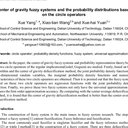Preventing diet-induced obesity in mice by adipose tissue transformation and angiogenesis using targeted nanoparticles.
Kata kunci
Abstrak
The incidence of obesity, which is recognized by the American Medical Association as a disease, has nearly doubled since 1980, and obesity-related comorbidities have become a major threat to human health. Given that adipose tissue expansion and transformation require active growth of new blood vasculature, angiogenesis offers a potential target for the treatment of obesity-associated disorders. Here we construct two peptide-functionalized nanoparticle (NP) platforms to deliver either Peroxisome Proliferator-Activated Receptor gamma (PPARgamma) activator rosiglitazone (Rosi) or prostaglandin E2 analog (16,16-dimethyl PGE2) to adipose tissue vasculature. These NPs were engineered through self-assembly of a biodegradable triblock polymer composed of end-to-end linkages between poly(lactic-coglycolic acid)-b-poly(ethylene glycol) (PLGA-b-PEG) and an endothelial-targeted peptide. In this system, released Rosi promotes both transformation of white adipose tissue (WAT) into brown-like adipose tissue and angiogenesis, which facilitates the homing of targeted NPs to adipose angiogenic vessels, thereby amplifying their delivery. We show that i.v. administration of these NPs can target WAT vasculature, stimulate the angiogenesis that is required for the transformation of adipose tissue, and transform WAT into brown-like adipose tissue, by the up-regulation of angiogenesis and brown adipose tissue markers. In a diet-induced obese mouse model, these angiogenesis-targeted NPs have inhibited body weight gain and modulated several serological markers including cholesterol, triglyceride, and insulin, compared with the control group. These findings suggest that angiogenesis-targeting moieties with angiogenic stimulator-loaded NPs could be incorporated into effective therapeutic regimens for clinical treatment of obesity and other metabolic diseases.


